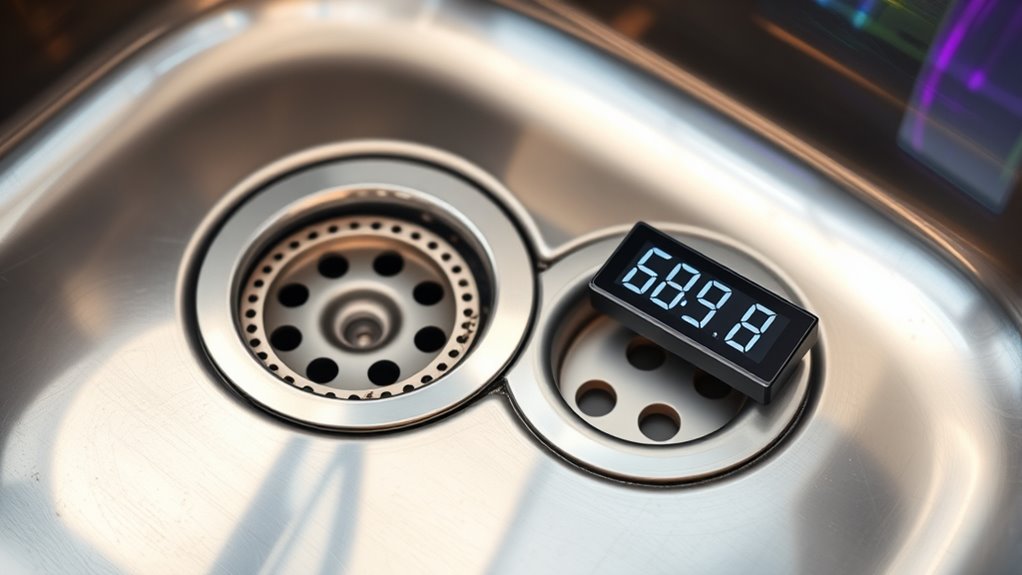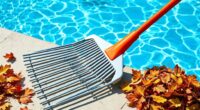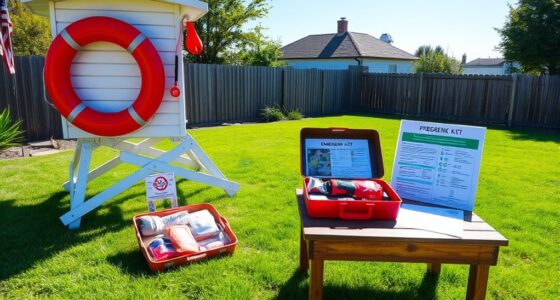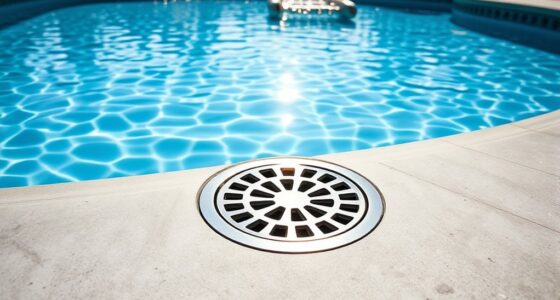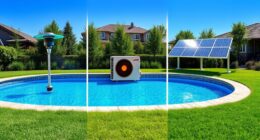To guarantee your pool’s safety, it’s important to understand split drains, covers, and timers. Split drains with multiple openings reduce suction but can be risky if blocked or outdated, especially in older pools. Proper safety covers prevent falls and block access to drains, while timers control pump operation to prevent continuous suction and potential injuries. By keeping these systems well-maintained and updated, you’ll better protect yourself and loved ones—continue to learn more about keeping your pool safe.
Key Takeaways
- Split drains with multiple openings reduce suction but can still pose entrapment risks if blocked or outdated.
- Proper, certified pool covers prevent accidental falls and block access to dangerous drains, enhancing safety.
- Timers control pump operation, limit run times, and prevent continuous suction that could cause injuries.
- Regular inspection and upgrading of outdated or malfunctioning systems are vital to prevent dangerous pressure buildup.
- Combining covers, timers, and proper maintenance significantly reduces suction-related hazards in pools and spas.
Understanding Split Drains and Their Risks
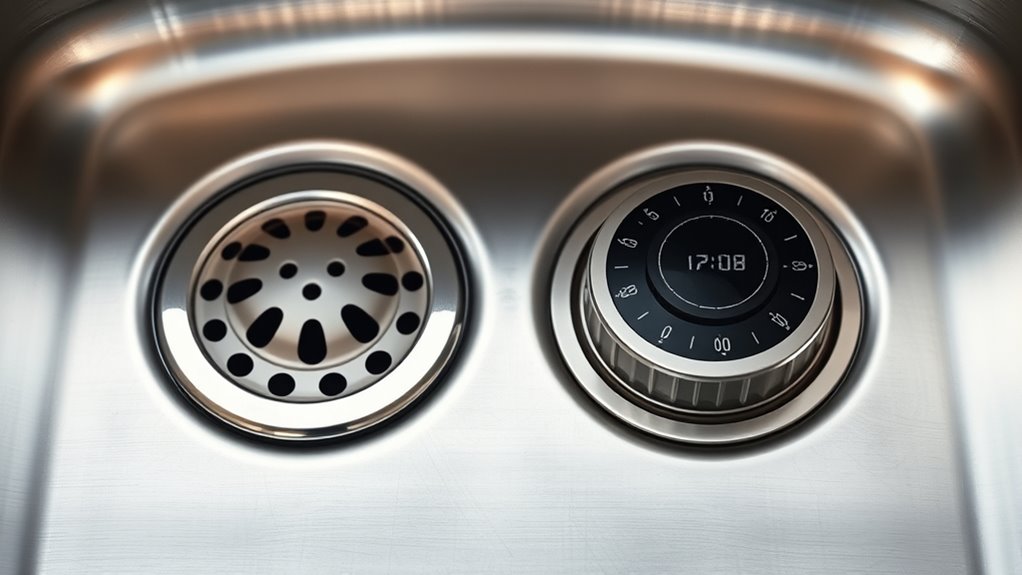
Have you ever wondered how split drains can pose serious safety risks? Split drains are designed with two or more openings, often used to improve water flow and reduce suction in pools and spas. However, their complex design can create dangerous pressure differences if not properly maintained. When one drain becomes blocked or clogged, the remaining open drain can generate intense suction that can trap swimmers or cause injuries. This increases the risk of entrapment, suffocation, or drowning. Many older pools still have these outdated split drain systems, which are more vulnerable to failure. Understanding how split drains work and their potential hazards is essential for pool owners. Proper inspection and upgrades are critical to minimize the dangers associated with these systems. Additionally, leadership skills such as proactive safety management and effective communication among staff can significantly reduce these risks.
The Importance of Proper Pool and Spa Covers
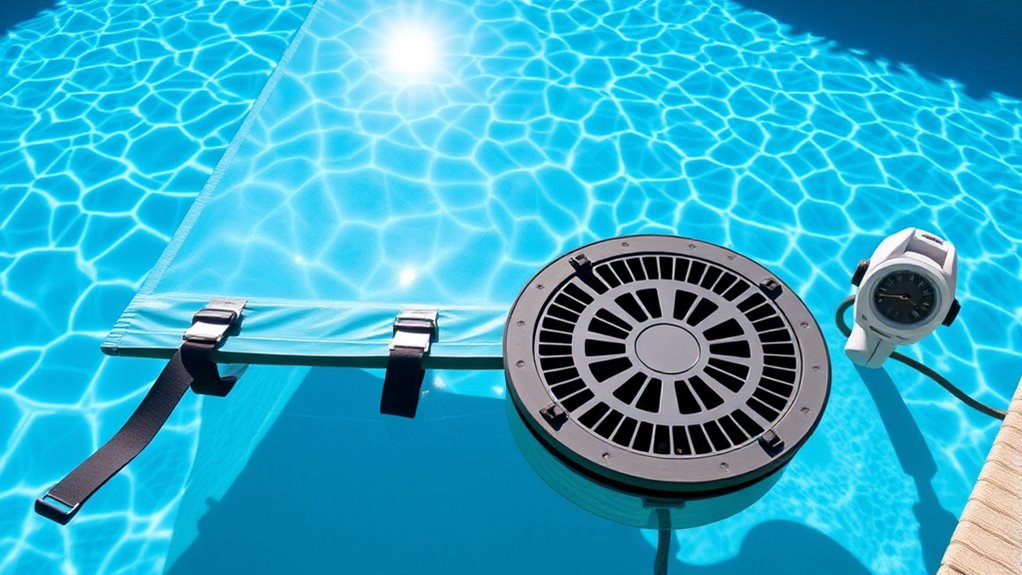
Using the right pool and spa covers is essential for safety and maintenance. A secure cover prevents accidental falls, especially for children and pets, reducing the risk of suction injuries. It also keeps debris out, which minimizes clogging and helps maintain proper water flow. Proper covers retain heat, saving energy and lowering heating costs. They protect your equipment from weather damage and UV exposure, prolonging its lifespan. When choosing a cover, ensure it fits snugly and is made from durable, non-slip materials. Regularly inspecting and maintaining your cover guarantees it remains effective. A well-maintained cover acts as a first line of defense, keeping everyone safe and your pool or spa in ideal condition. Proper covers are a simple, critical step toward safer, more efficient pool and spa use. Additionally, selecting covers with certified safety standards ensures maximum protection and durability.
How Timers Enhance Suction Safety
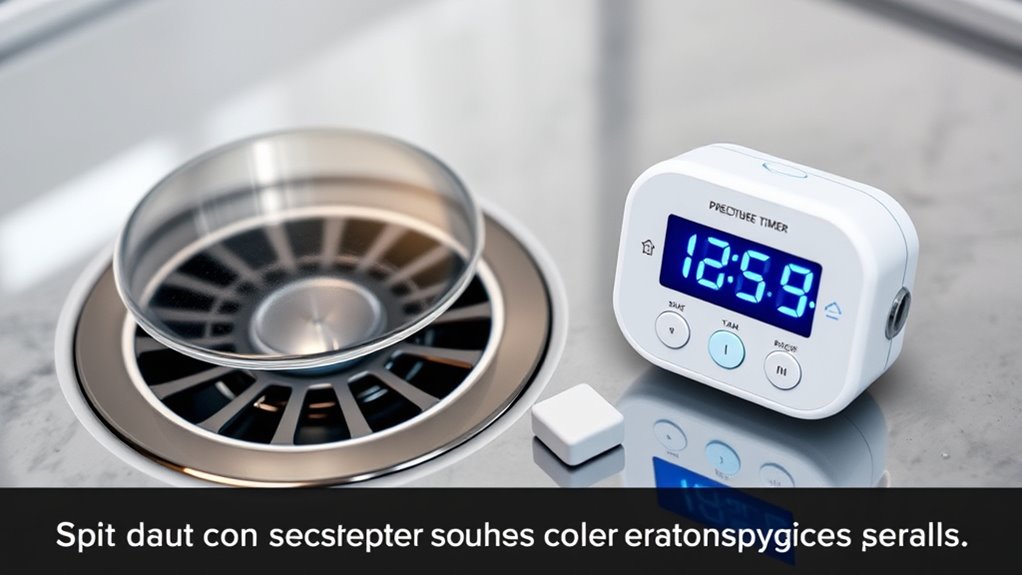
Timers substantially improve suction safety by ensuring that pool and spa systems operate only when intended. By controlling when the pump runs, timers prevent accidental or prolonged operation that could create dangerous suction conditions. When you set a timer, you limit the duration of pump activity, reducing the risk of entrapment or injury. If a malfunction occurs or a child gains access, the pump won’t run indefinitely, decreasing potential hazards. Timers also help you schedule regular maintenance, ensuring the system functions properly. This proactive approach minimizes risks associated with continuous operation, making your pool or spa safer for everyone. Overall, timers are a simple yet effective tool to enhance suction safety and provide peace of mind.
Frequently Asked Questions
How Often Should Pool Covers Be Inspected for Safety?
You should inspect your pool cover at least once a month to guarantee safety. Look for tears, wear, or damage that could expose the cover’s mesh or opening. After storms or heavy winds, check for debris or displacement. Regular inspections help prevent accidents, especially with covers that protect split drains or suction outlets. Maintaining a safe cover keeps everyone around the pool safer and minimizes risks of entrapment or injury.
Can Split Drains Prevent All Types of Suction Accidents?
Split drains considerably reduce the risk of suction accidents, but they can’t prevent all types. You still need to ensure proper installation, regular maintenance, and adherence to safety standards. Always check for damaged covers, malfunctioning timers, or blockages. While split drains improve safety, staying vigilant and following pool safety guidelines is essential to protect swimmers from potential suction hazards. Safety is a continuous, active effort.
Are There Specific Timers Recommended for Different Pool Sizes?
Yes, there are specific timers recommended for different pool sizes. Imagine the clock ticking as your pool’s safety depends on it—larger pools often need longer, more precise timers to prevent suction hazards. Smaller pools may require shorter, simpler timers. Always follow manufacturer guidelines and local safety codes, because choosing the right timer can make the difference between a safe swim and a dangerous accident. Don’t leave safety to chance—select wisely.
What Maintenance Is Needed for Split Drain Systems?
You should regularly inspect your split drain system for any cracks, corrosion, or damage. Clean the covers to prevent debris buildup, and verify the drain covers are securely fastened. Check the piping for leaks or blockages, and test the system’s flow to confirm proper operation. Schedule professional inspections annually to verify everything meets safety standards, and replace any worn or damaged components promptly to maintain safe and efficient suction safety.
How Does Temperature Affect the Effectiveness of Covers and Timers?
Imagine a chilly winter morning chilling your skin—temperature affects your covers and timers just like that. Cold weather makes covers brittle, risking cracks or breakage, while timers might slow down or stop working properly if they freeze. Hot weather can cause materials to soften or warp, reducing effectiveness. Keep an eye on these parts, guarantee they’re suited for the climate, and perform regular checks to maintain safety and functionality.
Conclusion
By understanding split drains, covers, and timers, you could prevent a safety disaster that might otherwise turn your pool into a danger zone. Ignoring these measures isn’t just risky — it could lead to catastrophic accidents that you’d regret forever. So, take action now! Equip your pool with the right covers, install timers, and guarantee your drains are safe. Don’t wait until tragedy strikes — make your pool a fortress of safety today!
